
On June 9, 2024, on a mostly sunny Sunday, 852 runners from 42 US states, 2 US Territories, 6 Canadian provinces and 5 additional countries congregated at Hyak Sno-Park along the Palouse to Cascades State Park Trail in Washington state to complete a journey of 26.2 miles. Most of the participants, including my sister and me, had one goal: to achieve a Boston qualifying time. Doing so does not guarantee a spot in the race, which typically accepts 30,000 entrants per year. The Boston Athletic Association’s marathon site explains the situation in bright red letters, “Due to field size limitations, achieving one’s qualifying standard does not guarantee entry into the event, but simply the opportunity to submit a registration application.” The last ten cutoff times have ranged from 1:02 to 7:47 and have excluded thousands runners, including this year’s five minutes and twenty-nine seconds, which led to the rejection of 11,039 applicants, all runners who completed a certified course within the qualifying time.

My journey, and that of my sister JoDee, began late last year when we first discussed the idea. For many road runners, attempting a Boston qualifying marathon time is a bucket list item, but I gave up road running ten years ago when I switched to trails and never looked back. Around the same time, JoDee took up running and after a very brief stint on roads, converted quickly to trails. Six years ago, the last time I ran a marathon (my third), it was in support of our 19-year-old son who wanted to run one, so I trained just enough to complete the course and did so, in just under 4:15. As a then 54-year-old, my time was twenty minutes shy of the cutoff for the cusp that I was (your qualifying age range is based on your age race day) for the 55-59 age range, but I didn’t care. Both before and after, I vowed to NEVER run another marathon.
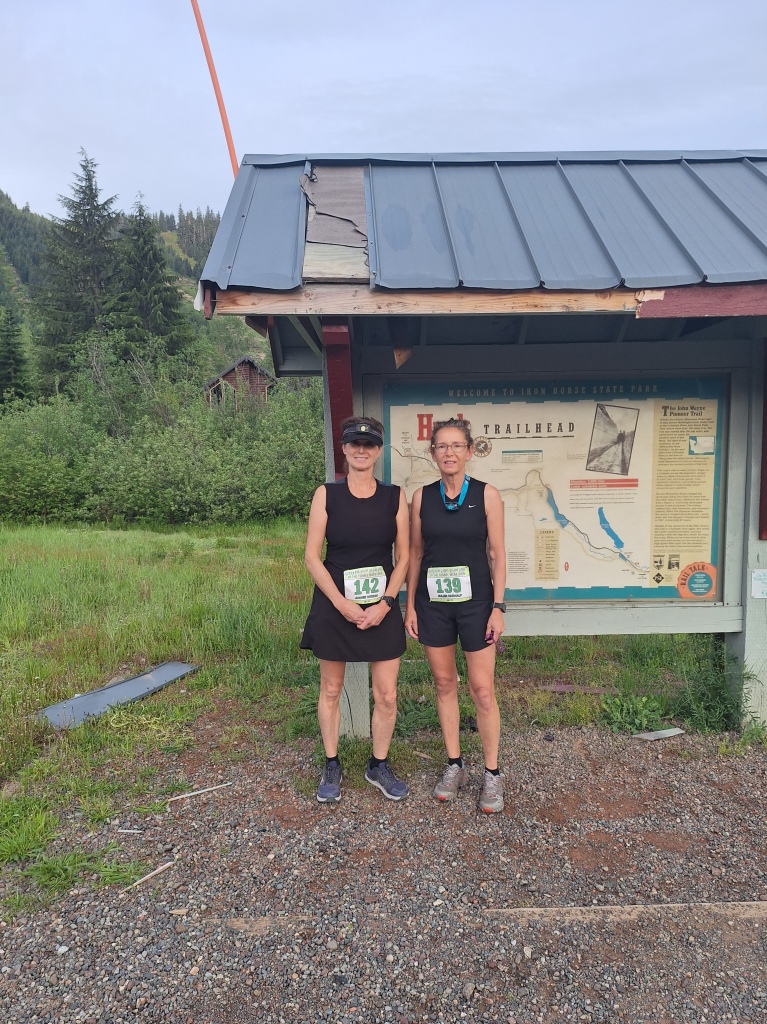

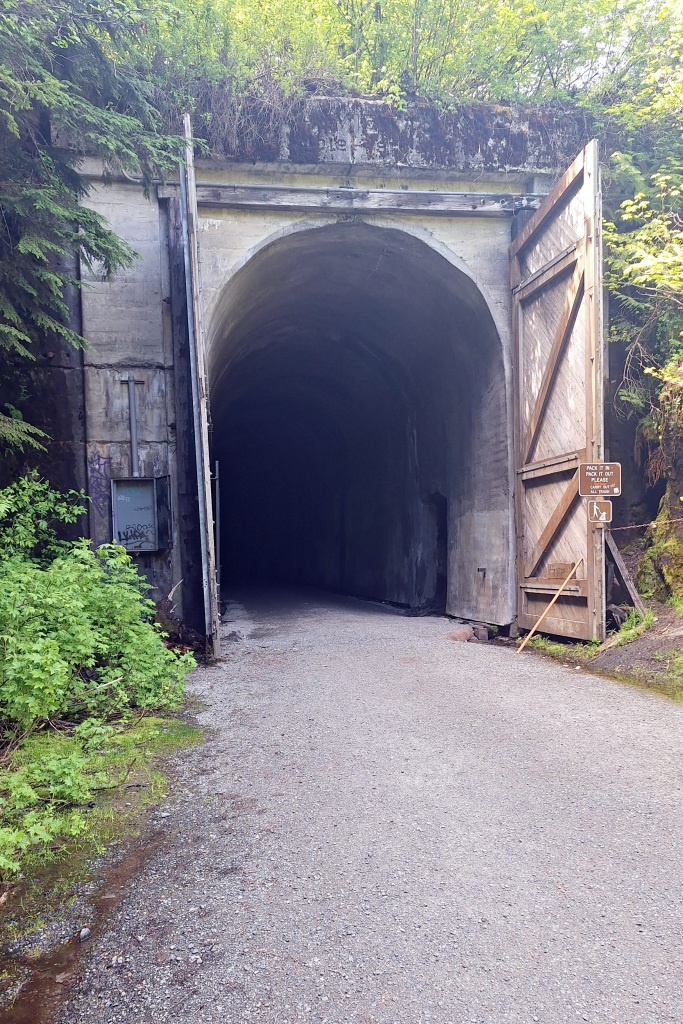

Since the 2018 marathon, I have spent my running time traversing the Anacortes Community Forest Lands and Deception Pass State Park trails, never once considering a return to the roads. But as my 60th birthday loomed, my running felt stuck in a deep, muddy, puddly rut. In 2020, at the planned end of my yearly November through February maintenance running season, a shorter weekly distance (18-20 miles) version of the rest of the year that would increase based on the trail events I planned to complete, continued for three years! By the fall of 2023, I knew that it was time to do something that would require me to feel more uncomfortable than usual. I remembered that the Boston qualifying time for women makes a big jump of 15 minutes from the 55-59 age range (4:05) to 60-64 (4:20), which made it a good time to consider trying to qualify. It took little to convince my sister to do same, and on January 1, we signed up. Because I had successfully used the Run Less Run Faster plan in the past, I decided to use it again but lower the long run mileage to make it manageable, prevent injury and avoid hating my running life. Additionally, I would allow myself one day a week to complete one of the runs on trails rather than the road, which meant running a slower pace than prescribed.
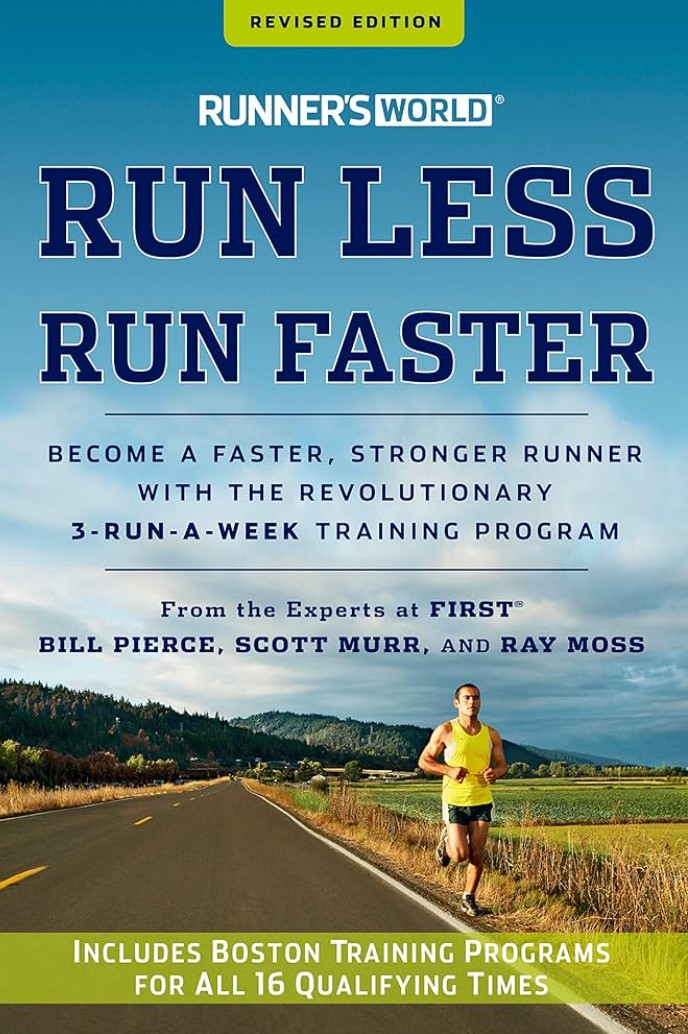
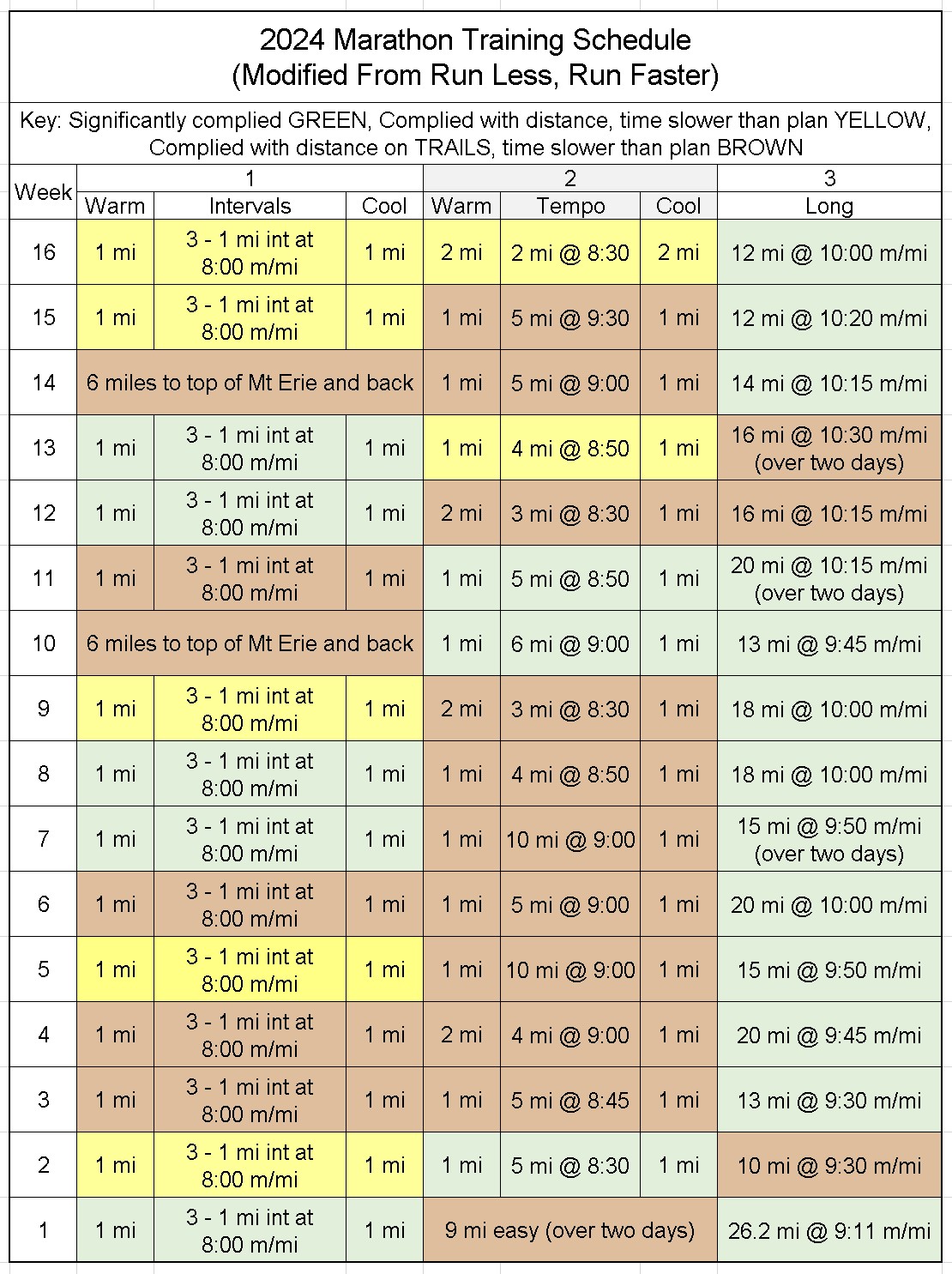
The Run Less Run Faster plan requires three runs per week: track repeats, tempo, and long. My version of the book is outdated, containing Boston qualifying times (like the 4:10 I chose) that were shortened in 2013 because it would give me a ten minute buffer for the 4:20 required. In mid-February, JoDee and I started training, but during the first few weeks, I ran one to four miles less on long runs than was indicated. Later, I complied significantly with the runs except in exchanging at least one per week time on the trails, which was always slower than the plan.
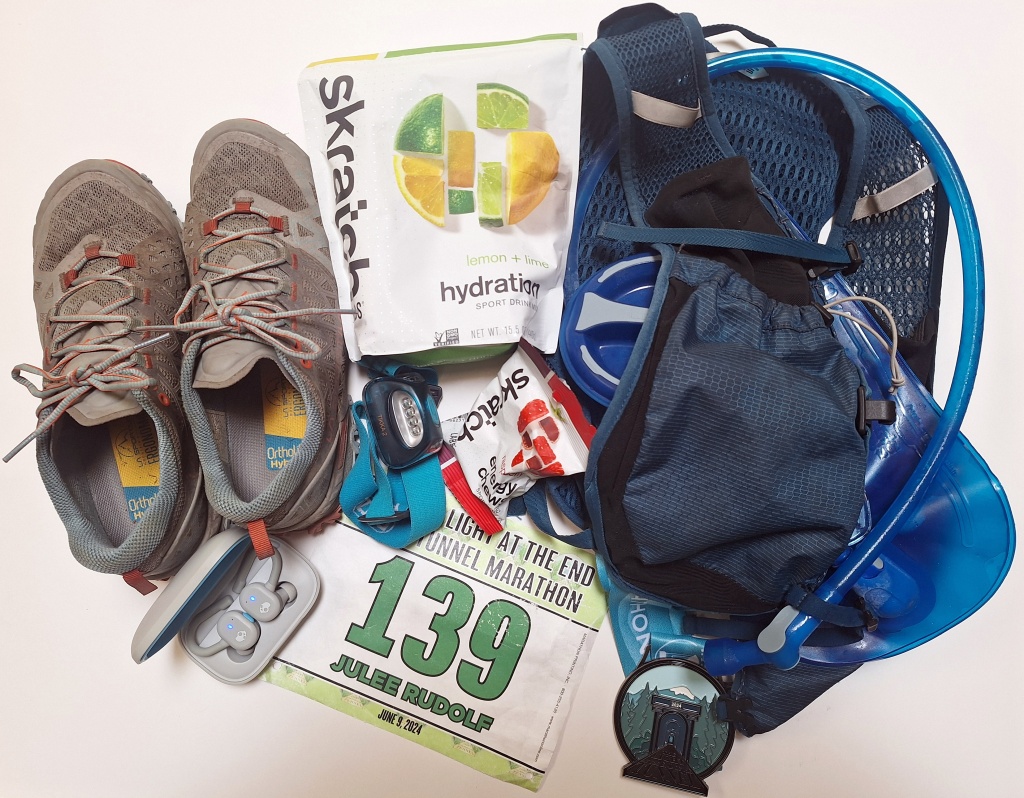
Race day temperatures were perfect, ranging from about 48 degrees at the start to 74 degrees at the finish. My sister and I started separately but in the same wave at 7:00 am. We hadn’t planned to run together, but once I caught her around mile three, we did. In pre-marathon training, she usually runs faster and farther than I do, which weighed on me during the race because I knew she could pass me at any time. Around mile 20, in spite of gumming energy chews and sipping electrolytes from my hydration pack at regular intervals, I felt fatigued, but resisted slowing down with the thoughts: that I’d NEVER do “this” again; that I’d run so many miles (about 440) to train for it; and that I’d spent a significant amount of time feeling very uncomfortable during many of those runs. I squeezed out every last ounce of energy until the finish line. JoDee did the same and we both achieved Boston qualifying times with minutes to spare, 19.5 for me, 12.5 for her.
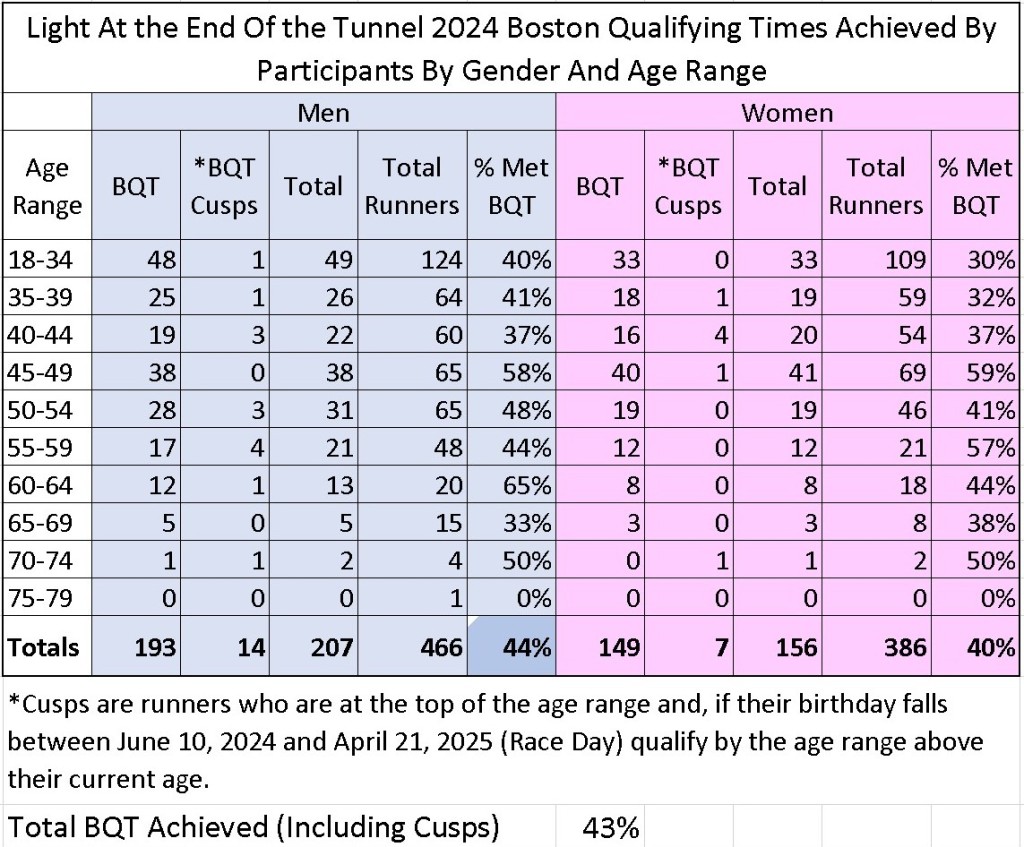
In fact, 156 women and 207 men (43 percent of the participants) achieved Boston qualifying times. The top male finisher, 24-year-old Grant Thomas (who left 35 minutes on the Boston qualifier table) now holds the course record, while the top female finisher, 47-year-old Desiree Berry (over 56 minutes on the table) now holds the 3rd fastest time for a woman.

In the 2020 study Risk Taking Runners Slow More in the Marathon, researchers found that “…runners with greater weekly training distances, more long training runs, more completed marathons, more years of experience, and who regularly trained at faster than their target pace showed significantly less slowing in the second half of their marathon.” A side by side sister comparison of these factors likely gave me the edge.
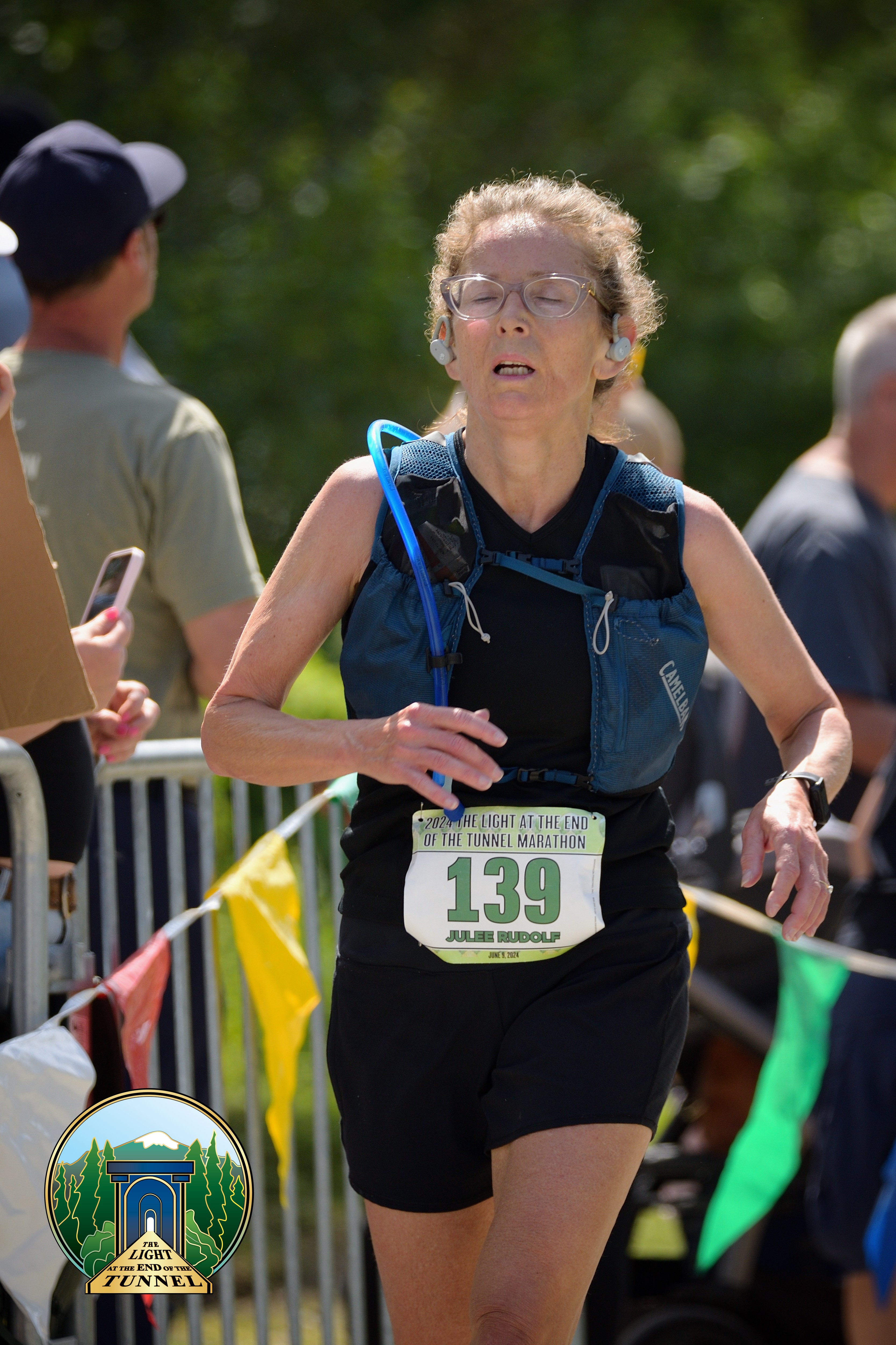


A few weeks prior to the race, we’d agreed that whatever happened, we would NEVER run another marathon. And we won’t, but that means two more spots are available for runners who actually want to run Boston. To these two runners, my sister and I say: You’re welcome :-).


You are JoDee were simply amazing- all through your training and in the race. I am so impressed with both of you!
Awww, thank you so much, Nina. And thank you for running all of those miles, especially long distances with me. Love you
Great article, Grade run.
Thank you, Carol 🙂